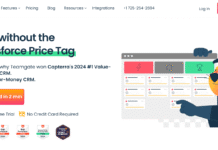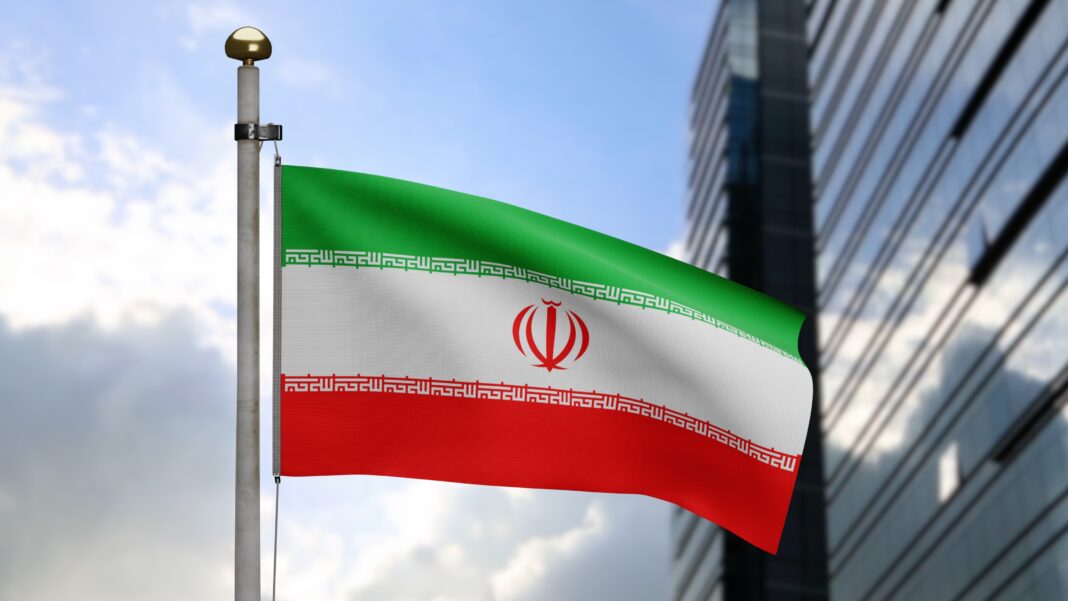The Iran startup ecosystem has become one of the most instructive examples of innovation under constraint. Over the past decade, Iranian founders, investors, and engineers have built digital businesses that operate successfully in a restricted yet opportunity-rich environment. The Iran startup ecosystem demonstrates that necessity can drive localization, efficiency, and long-term competitiveness. This article provides an analytical and educational overview of the market, covering its structure, enablers, challenges, and the most influential companies shaping its direction. It is designed for founders, analysts, and policymakers seeking to understand how a self-reliant ecosystem can grow despite limited access to global capital or infrastructure.
Market Landscape
Demographic Dynamics
A young, educated, and digitally native population forms the foundation of the Iran startup ecosystem. More than half of citizens are under 35, producing a consumer base that adapts quickly to new digital tools. Smartphone penetration exceeds 90 percent in urban centers, and 4G coverage supports high-frequency app usage. This environment favors mobile-first design, fast feedback loops, and iterative product development. For entrepreneurs, the demographic structure ensures constant demand for better online services and provides a strong supply of skilled labor.
Localization as Competitive Advantage
Sanctions that restrict access to global platforms forced Iranian entrepreneurs to localize. Instead of relying on imported infrastructure, the Iran startup ecosystem created domestic alternatives in payments, cloud computing, and logistics. App stores such as Cafe Bazaar and Myket, local advertising networks, and home-grown fintech rails like Shetab and Shaparak illustrate this independence. Localization has evolved into a structural advantage, producing solutions optimized for domestic regulation, consumer behavior, and cultural nuance. The ecosystem’s resilience rests on this ability to transform barriers into moats.
Infrastructure Foundations
A functioning digital economy requires strong foundations. Over the last decade, the Iran startup ecosystem has developed local cloud providers, content-delivery networks, and efficient last-mile logistics. These components enable startups to scale without dependence on foreign vendors. Reliable domestic infrastructure has also increased investor confidence, as entrepreneurs can build predictable unit economics and maintain service continuity even under external shocks.
Growth Drivers
Education and Talent Supply
Iranian universities, particularly Sharif University of Technology and the University of Tehran, produce a large number of graduates in computer science, AI, and data engineering. This continuous flow of technical talent feeds directly into startups. The Iran startup ecosystem benefits from affordable and skilled engineers who experiment quickly and accept the risks associated with early-stage work. Lean teams shorten iteration cycles and improve product-market fit.
Cost Efficiency and Lean Experimentation
Operational expenses in Iran are significantly lower than in regional hubs such as Dubai or Istanbul. This cost structure extends the financial runway of startups and encourages experimentation. Entrepreneurs can test multiple hypotheses with limited capital, a factor that strengthens resilience. The Iran startup ecosystem rewards discipline in cost management and early monetization, making revenue sustainability a cultural norm rather than an exception.
Consumer Behavior and Digital Adoption
Consumer patterns shifted rapidly toward online services after the pandemic. Grocery delivery, ride-hailing, and telemedicine became integral parts of daily life. Even as restrictions eased, these behaviors persisted. The Iran startup ecosystem now operates in a market where convenience, transparency, and affordability define user loyalty. Price sensitivity has also stimulated thriving second-hand and C2C markets, giving startups additional layers of engagement.
Funding and Policy Environment
Domestic Capital Formation
Limited access to international venture capital prompted domestic investors, angel networks, and corporate venture arms to fill the gap. Accelerators attached to universities and holding companies provide early-stage capital and mentorship. Revenue-based financing and hybrid bootstrapping models are common. Startups within the Iran startup ecosystem aim for cash-flow break-even early, reducing dependence on continuous fundraising and aligning growth with profitability.
Government Programs and Regulatory Support
Public institutions have gradually recognized the economic importance of startups. The Vice Presidency for Science and Technology and the Iran National Innovation Fund offer tax incentives, low-interest loans, and grant programs to “knowledge-based” companies. Tech parks such as Pardis Technology Park host incubators and shared labs. Although regulatory overlap persists, policy direction increasingly favors entrepreneurship. These measures create partial stability in an otherwise uncertain macro environment.
Compliance and Governance
Fragmented regulation across fintech, data privacy, and ecommerce obliges startups to embed compliance directly into their operations. A compliance-by-design approach—where legal, financial, and cybersecurity requirements are integrated from inception—has become standard practice. Governance maturity differentiates sustainable companies from opportunistic entrants. In the Iran startup ecosystem, legal readiness is not optional; it is a growth enabler.
Key Sectors
E-Commerce and Marketplaces
Ecommerce remains the anchor sector of the Iran startup ecosystem. Platforms connect thousands of merchants with millions of consumers, offering everything from electronics to groceries. Sophisticated logistics, order tracking, and customer support have improved consumer trust. Super-app strategies that combine shopping, delivery, and payments increase user retention and transaction frequency. For many households, online retail is now a default behavior.
Fintech and Digital Payments
Fintech provides the financial infrastructure that sustains all other sectors. Payment service providers, wallets, and BNPL models extend financial inclusion and convenience. The Iran startup ecosystem relies on national rails that allow digital transactions to function without global intermediaries. Fintech companies also support SMEs through cash-flow management, merchant loans, and open-banking initiatives. The growth of fintech signals the ecosystem’s shift toward more sophisticated financial services.
SaaS and SME Digitization
Small and medium-sized enterprises are digitizing accounting, HR, and inventory management through affordable software-as-a-service tools. Local vendors integrate tax rules and domestic payment systems, giving SMEs tools comparable to global software at lower cost. The Iran startup ecosystem’s emphasis on vertical SaaS creates measurable productivity gains and fosters B2B recurring revenue streams.
Healthtech and Edtech
Telemedicine, e-pharmacy, and digital learning platforms are expanding rapidly. These sectors solve critical accessibility challenges, especially outside major cities. For healthtech, secure data storage and doctor credential verification are core requirements. In edtech, adaptive learning and vocational training bridge skill gaps. Both verticals highlight how the Iran startup ecosystem addresses social needs while maintaining commercial viability.
Content and Entertainment
With international streaming services restricted, domestic platforms for video, music, and gaming have flourished. Subscription models and ad-supported content dominate. Localized entertainment aligns with cultural preferences and offers creators monetization options through domestic ad networks. The content economy contributes significantly to engagement metrics across the Iran startup ecosystem.
Top Iranian Startups to Watch
The Iran startup ecosystem is led by several companies that embody innovation, scalability, and resilience. For reference lists and categorized insights, readers can explore top. The following five companies illustrate the ecosystem’s depth and diversity.
Founded in 2006, Digikala is the largest e-commerce and logistics platform in Iran. It manages multi-node warehouses, advanced fulfillment systems, and millions of SKUs. Its focus on customer trust and transparent reviews has made it synonymous with online shopping in Iran. Within the Iran startup ecosystem, Digikala represents scale achieved through operational excellence.
2.Snapp
Established in 2014, Snapp began as a ride-hailing service and has grown into a multi-service super app offering transport, food delivery, and grocery services. Its strength lies in network density and cross-vertical user engagement. Snapp is an example of how the Iran startup ecosystem leverages mobility data to build sustainable retention.
Cafe Bazaar functions as Iran’s primary Android app store and developer marketplace. It provides payments integration, analytics, and promotion tools for thousands of developers. By localizing distribution and monetization, it became a cornerstone of the Iran startup ecosystem.
4.Zarinpal
Zarinpal is a payment service provider supporting over a million merchants. It facilitates secure transactions through compliance with national payment rails. Its merchant dashboard, API infrastructure, and fraud-control features make it integral to the digital commerce framework of the Iran startup ecosystem.
5.Nobitex
Founded in 2017, Nobitex is the leading cryptocurrency exchange in Iran. It offers a regulated platform for crypto trading and wallet management. Despite international restrictions, it demonstrates how blockchain innovation can flourish within the Iran startup ecosystem when trust and security are prioritized.
Instructional Framework for Analysis
Evaluating Market Fit
Analysts should begin with TAM (total addressable market) estimation using population data, purchasing power, and internet access. Serviceable market calculations must consider regulatory limits and logistics reach. In the Iran startup ecosystem, successful businesses focus on high-frequency use cases with clear pain points and retention potential.
Assessing Unit Economics
Accurate cost measurement is critical. Analysts must include inflation adjustments and currency volatility buffers. In the Iran startup ecosystem, contribution margin discipline and CAC payback targets below 12 months indicate strong operational health. Profitability serves as a signal of resilience rather than a constraint.
Measuring Infrastructure Integration
Companies that control their own distribution, payment, or data infrastructure have higher defensibility. Integration lowers costs and reduces dependency on third parties. In the Iran startup ecosystem, vertical integration correlates with longer-term market leadership.
Strategic Operations in the Iran Startup Ecosystem
Financial Planning and Sustainability
Sound financial planning underpins long-term survival. Startups in the Iran startup ecosystem build five-quarter operating plans that link key metrics such as customer acquisition cost, contribution margin, and cash runway. Given economic volatility, founders rely on scenario planning that models optimistic, neutral, and adverse outcomes. This structured forecasting protects runway and ensures the company can withstand currency shifts or supply disruptions. The discipline of aligning spending with measurable returns has become a defining strength of the Iran startup ecosystem.
Pricing and Monetization Models
Pricing strategies must balance affordability with profitability. Consumer-facing businesses rely on transparent tiers that match varying purchasing power across cities. For software and service providers, value-based pricing tied to usage or business results enhances retention. In the Iran startup ecosystem, predictable pricing and clear refund policies improve trust, while early monetization provides cash stability and reduces reliance on external funding.
Working Capital and Liquidity
Efficient management of receivables, payables, and inventory ensures liquidity. In a market sensitive to currency fluctuations, startups prefer shorter cash conversion cycles and automated reconciliation. The Iran startup ecosystem rewards operational prudence. Startups use flexible settlement terms and digital invoicing to maintain consistent cash flow, an approach that stabilizes growth even during inflationary periods.
Governance and Legal Compliance
Entity Structure and Regulation
Entrepreneurs must select appropriate legal structures compatible with local tax regimes and government incentives. Knowledge-based certification grants tax relief and access to credit lines, but compliance requirements are strict. Companies in fintech, healthtech, and ecommerce operate under overlapping authorities; therefore, mapping regulatory responsibilities is essential. Within the Iran startup ecosystem, mature startups treat compliance as a component of brand equity rather than an obstacle.
Data Governance and Security
Trust in digital services depends on secure data handling. Founders must implement privacy frameworks aligned with domestic standards, including consent management and encrypted storage. In the Iran startup ecosystem, businesses that prioritize data integrity gain faster adoption from both users and corporate partners. Security training, audits, and continuous monitoring are integral parts of sustainable operations.
Ethical Standards and Transparency
Ethical conduct is a competitive advantage. Transparent communication, responsible marketing, and accountability strengthen reputation. Startups in the Iran startup ecosystem are expected to demonstrate social value through job creation, SME support, and financial inclusion. Ethical consistency attracts investors and talent, building long-term stakeholder confidence.
Strategic Partnerships and Market Expansion
Collaboration with Corporates
Partnerships with telecom, banking, and retail groups amplify reach and credibility. These incumbents provide infrastructure, customer bases, and regulatory channels that accelerate scaling. In the Iran startup ecosystem, many successful pilots transition into full-scale collaborations when startups deliver reliability and compliance. Well-managed alliances can transform limited domestic capital into national distribution.
Regional and International Growth
Despite sanctions, regional expansion remains possible through exportable IT services, software licensing, and B2B outsourcing. Neighboring markets in MENA and Central Asia share linguistic and operational similarities. By offering white-label products or software services, startups in the Iran startup ecosystem can generate foreign-currency income without breaching restrictions. Gradual expansion helps maintain focus on domestic operations while developing international competencies.
Knowledge Transfer and Community Building
Collaboration among founders, universities, and accelerators fosters knowledge diffusion. Shared learning programs, open-source projects, and mentorship networks reduce duplicated effort. The Iran startup ecosystem continues to benefit from peer-to-peer learning and joint research that improves both technology and management practice.
Technology and Product Development
Modular and Scalable Architecture
To remain stable under unpredictable conditions, startups adopt modular, API-first systems. This design allows quick adaptation when policies or markets shift. In the Iran startup ecosystem, modularity ensures that products can continue functioning even during partial outages or infrastructure changes. Scalable architecture lowers long-term costs and increases operational resilience.
Experimentation and Product Iteration
Continuous experimentation supports innovation. Startups use data analytics and A/B testing to refine user experience. In the Iran startup ecosystem, experimentation must be balanced with caution, as network disruptions and policy constraints can affect sampling accuracy. Nonetheless, data-driven iteration remains central to product success.
Customer-Centric Design
User feedback loops, usability testing, and localized interface design improve retention. The Iran startup ecosystem emphasizes simplicity and trustworthiness. Products with intuitive onboarding and responsive support generate higher engagement across diverse demographics.
Human Capital and Organizational Learning
Talent Retention and Growth
Brain drain remains a structural challenge, yet many companies counter it by offering equity incentives, flexible work arrangements, and professional development. In the Iran startup ecosystem, cultivating purpose-driven culture keeps top engineers and managers engaged. Leadership programs and technical guilds also build institutional knowledge, ensuring continuity as startups grow.
Team Structure and Accountability
Effective teams operate through clear objectives and key results. Small cross-functional squads enhance decision-making speed. In the Iran startup ecosystem, decentralized management helps companies respond quickly to regulation or market shifts. Continuous learning and transparent evaluation systems improve morale and productivity.
Diversity and Inclusion
As more women enter technology and entrepreneurship, diversity has become a source of innovation. The Iran startup ecosystem increasingly values inclusive hiring and equitable workplace policies. Broader participation expands perspective, strengthens design insight, and improves brand perception.
Performance Measurement and Analytics
Metrics for Sustainability
Consistent tracking of financial and operational metrics ensures accountability. Startups in the Iran startup ecosystem monitor customer acquisition cost, lifetime value, retention, delivery performance, and unit margins. Data visualization dashboards provide clarity for both management and investors. Periodic stress testing against inflation and FX fluctuations ensures realistic performance evaluation.
Reporting and Transparency
Monthly dashboards and quarterly board reviews standardize governance. Reliable reporting builds investor confidence and facilitates access to domestic funding. The Iran startup ecosystem values precision; inaccurate reporting or inconsistent data undermines credibility and limits scaling opportunities.
Sectoral Deep Dive
Fintech Evolution
The fintech segment of the Iran startup ecosystem has progressed from simple gateways to complex financial solutions. Payment providers now integrate analytics, merchant credit, and embedded finance. As open-banking standards develop, new products such as API-based lending, automated reconciliation, and risk-based pricing emerge. This progression strengthens the ecosystem’s financial backbone and increases liquidity for SMEs.
SaaS for SMEs
SaaS platforms enable small enterprises to modernize operations. Cloud-based tools for accounting, HR, and CRM create efficiency and data visibility. In the Iran startup ecosystem, vendors who combine software with advisory support build long-term loyalty. Embedded payment modules and financing options further expand monetization.
Healthtech and Edtech Scalability
Digital healthcare and education platforms now target underserved regions. Telemedicine applications integrate directly with e-pharmacies, ensuring continuity of care. Edtech providers use adaptive learning systems and partner with universities for accredited certifications. These sectors in the Iran startup ecosystem generate both economic and social returns, aligning innovation with public welfare.
Content and Gaming Growth
The entertainment sector continues to expand as infrastructure improves. Domestic streaming and gaming companies produce localized experiences for Persian-speaking audiences. Subscription bundles and in-app purchases increase recurring revenue. In the Iran startup ecosystem, these creative industries also serve as gateways for talent migration into design and software development.
Instructional Training for Analysts and Founders
Analytical Framework for Evaluation
Analysts studying the Iran startup ecosystem apply a multi-layered approach. Step one is defining the target segment and its frequency of need. Step two involves quantifying monetization potential and operational efficiency. Step three tests resilience under regulation and infrastructure risk. This method ensures objective evaluation of market position and growth capacity.
Operational Checklist for Founders
Founders use structured checklists to maintain discipline. Each quarter they revisit pricing, retention, liquidity, compliance, and human-capital development. In the Iran startup ecosystem, operational excellence emerges from consistent repetition of these fundamentals rather than disruptive shifts.
Educational Integration
Universities and accelerators now teach entrepreneurship as a structured discipline. Courses on lean startup methods, financial modeling, and growth analytics institutionalize best practices. By connecting academia and industry, the Iran startup ecosystem converts theoretical knowledge into practical execution.
Risks and Mitigation Strategies
Macroeconomic Volatility
Inflation and currency depreciation remain major risks. Startups mitigate these pressures through dollar-linked contracts, dynamic pricing, and conservative forecasting. In the Iran startup ecosystem, financial agility is vital to maintaining stability during volatile cycles.
Internet Reliability
Connectivity interruptions disrupt operations and trust. Redundant hosting, cached data, and offline functionality reduce vulnerability. Founders who invest early in technical resilience safeguard business continuity within the Iran startup ecosystem.
Regulatory Change
Policy shifts can alter entire business models overnight. Legal monitoring, trade associations, and direct communication with regulators help anticipate change. Companies that plan for compliance flexibility can continue scaling under new conditions in the Iran startup ecosystem.
Future Outlook
The next decade will define the Iran startup ecosystem as a regional model for localized innovation. Key drivers include SME digitization, embedded finance, artificial intelligence for Persian language processing, and climate technology. As infrastructure matures and regulatory systems stabilize, capital efficiency and data-driven operations will remain strategic differentiators. Regional service exports in software and IT outsourcing will further diversify income sources, positioning the Iran startup ecosystem as a sustainable contributor to the digital economy.
Conclusion
The Iran startup ecosystem illustrates how structural limitations can evolve into engines of innovation. Through localization, operational rigor, and policy adaptation, Iranian entrepreneurs have created a digital economy that functions independently of global platforms. Demographic energy, technical talent, and cost efficiency continue to propel growth. Challenges such as sanctions, inflation, and brain drain persist, yet the culture of resilience and financial discipline converts these pressures into learning advantages.
The five leading companies highlighted in this article demonstrate how integration, compliance, and trust build durable moats. Digikala anchors ecommerce and logistics; Snapp shapes mobility and delivery; Cafe Bazaar supports app distribution; Zarinpal powers financial transactions; and Nobitex advances blockchain services. Together they define the operational maturity of the Iran startup ecosystem.
As the market evolves, the focus will shift from survival to scalable sophistication. SME digitization, AI deployment, and sustainable technologies will guide the next stage of growth. Policymakers, investors, and founders who align with these trends will help transform the Iran startup ecosystem from a national achievement into a regional benchmark for innovation born from necessity.

















































